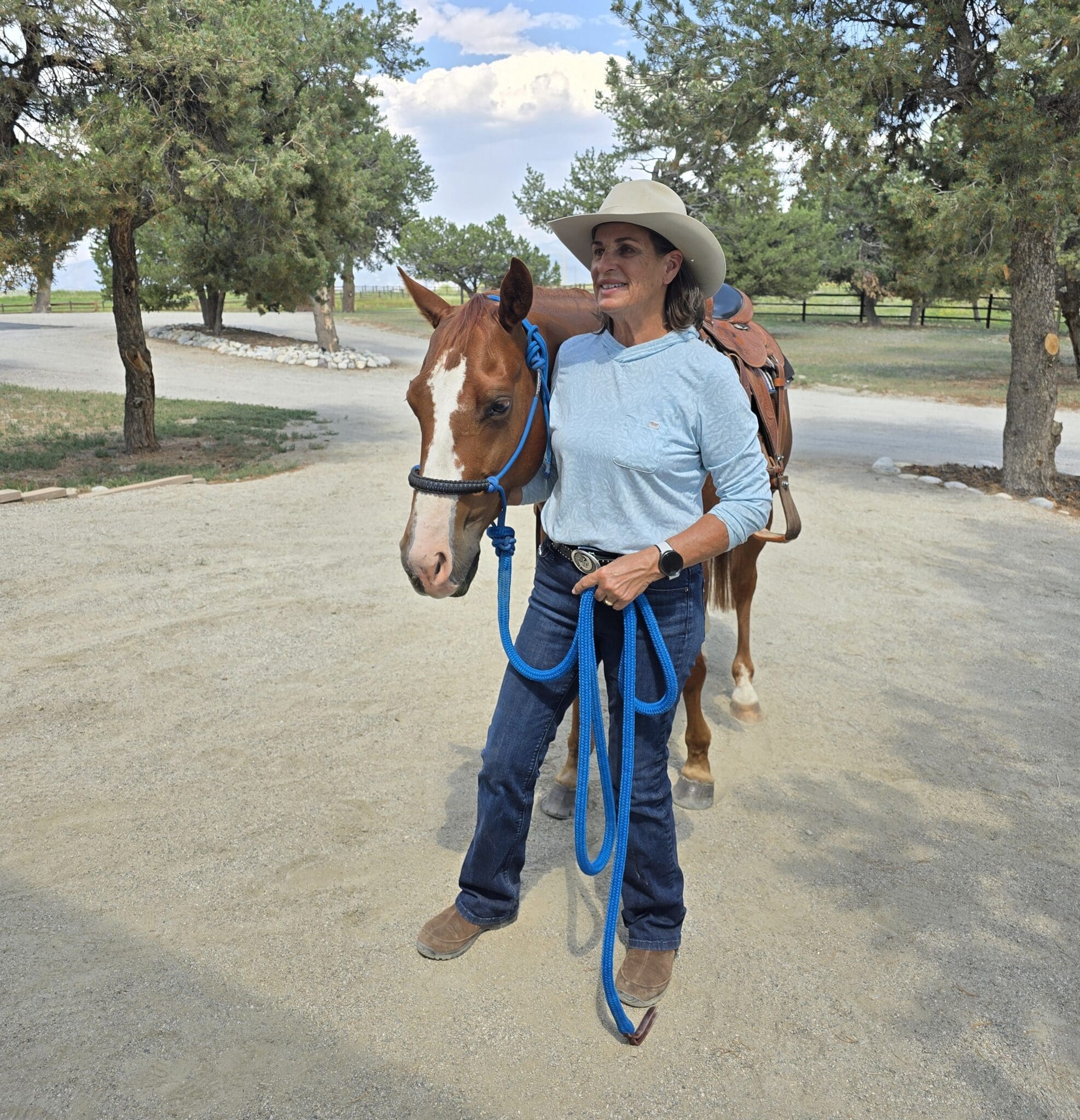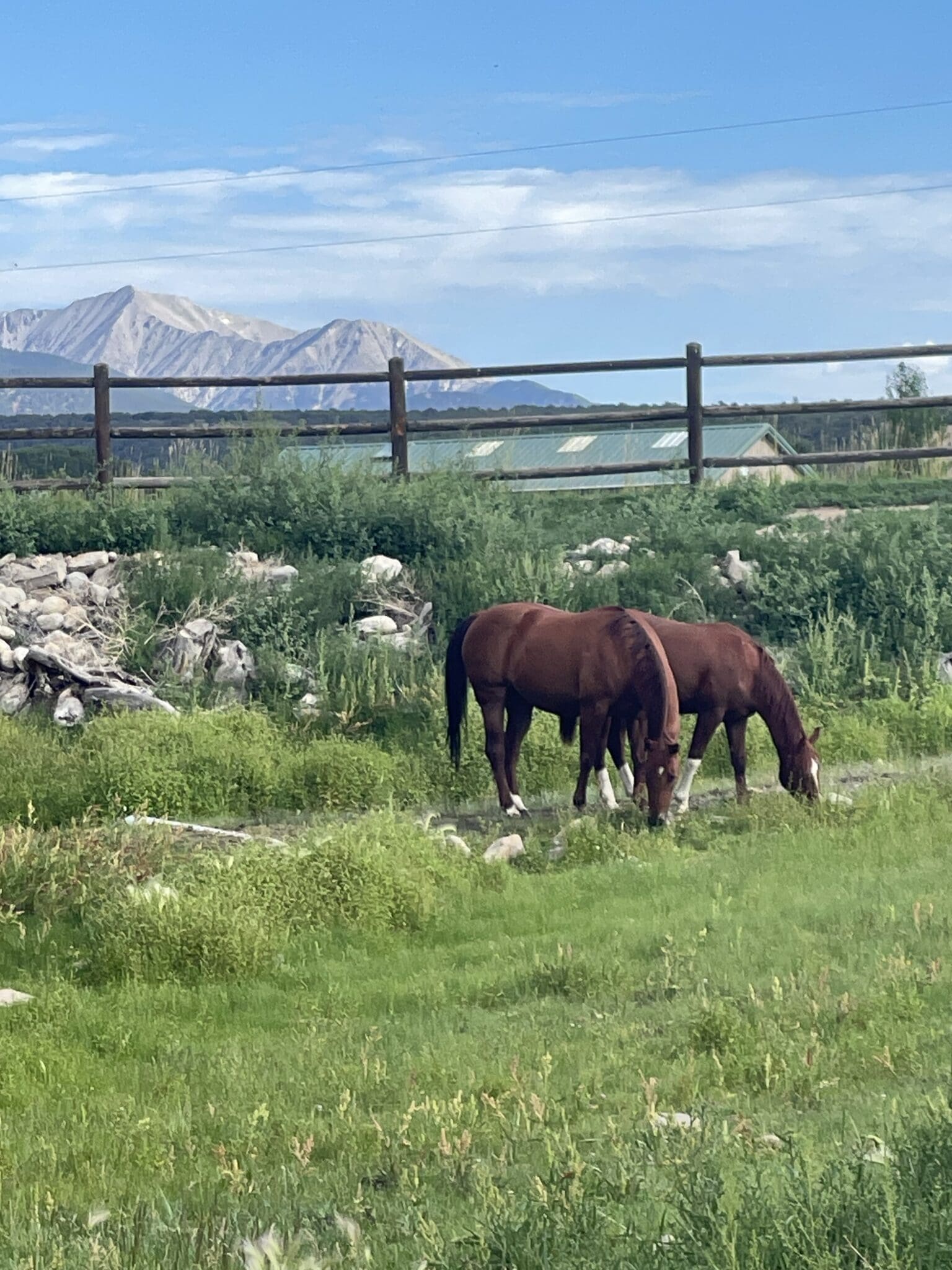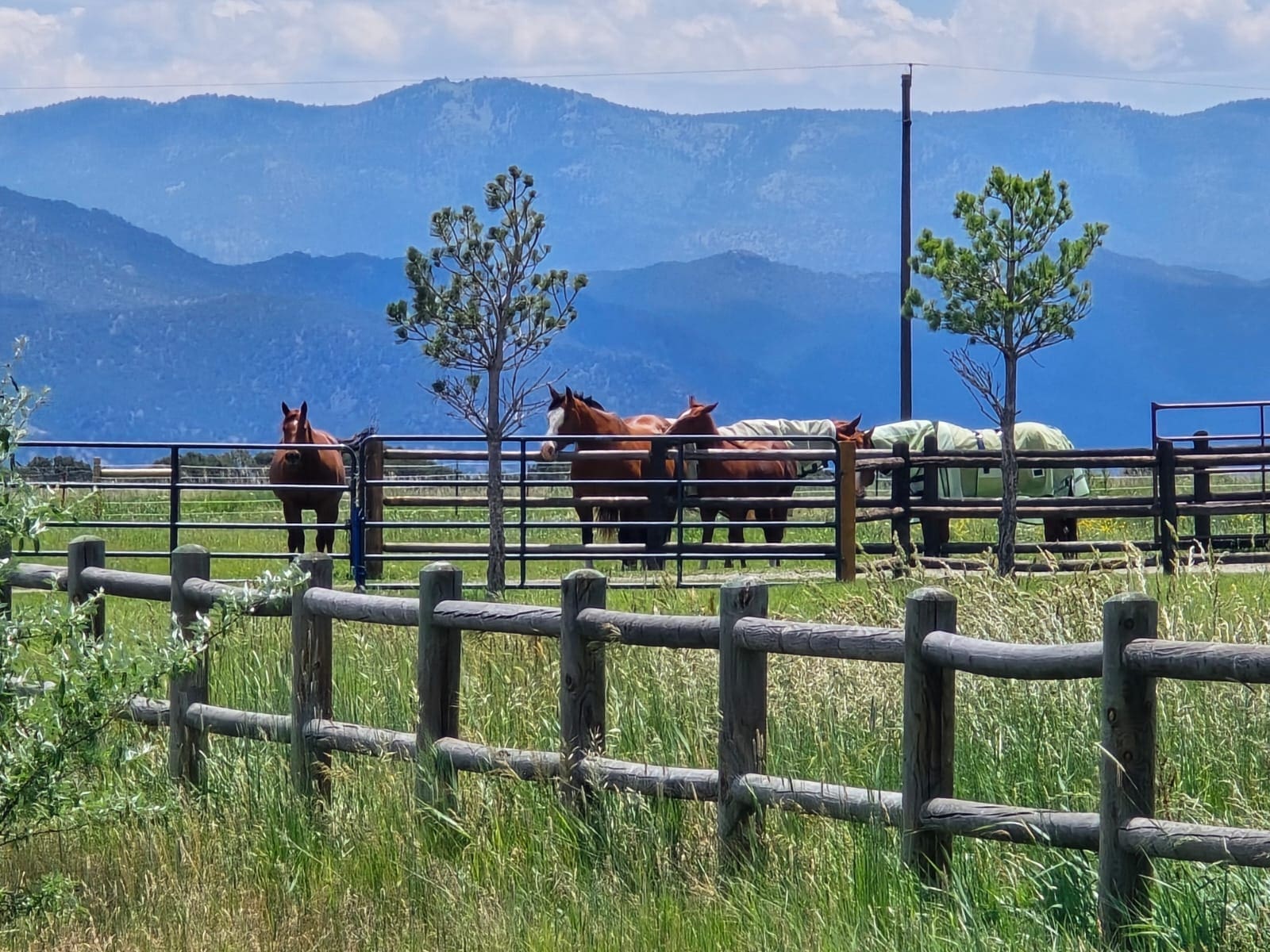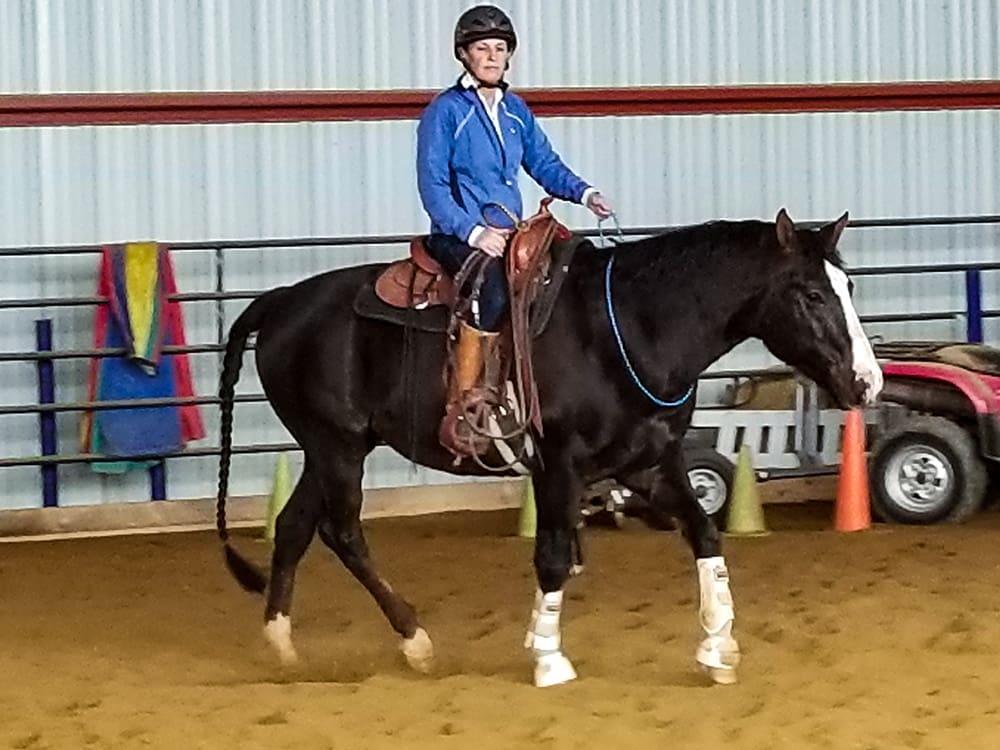Horse Master How To
“Get it Straight” Helping a frustrated rider find the right bit and cue her horse to move straight ahead
By Julie Goodnight
In the Horse Master episode we named “Get it Straight,” master bit maker, Dale Myler, joined me to help a horse and her frustrated rider move ahead with relaxation—and without a constant fight as the horse yanked the reins out of the rider’s hands. The show, featuring Julianne and her horse “Cherokee,” was named in part because Cherokee took any bit pressure as a cue to turn her head and move into a circle; it was also named to allude to the mishmash of information available about bits and bitting. As the Mylers like to say, “Help a horse be relaxed first and he can focus on what you’re asking.” If a bit is too big or has pressure points that interfere with the horse’s ability to swallow, the horse can’t relax and can’t easily focus on what the rider wants. While choosing to ride with no bit is an answer for some, the truth is that a kind and thoughtfully-created bit can provide you with a chance to cue your horse precisely for advanced maneuvers. Not all bits are bad, but it’s time to “Get it Straight.”
Types of Bits
There are two main types of bits–snaffles (direct pressure) and curbs (leverage bits). You may think that a snaffle bit is automatically mild and a curb bit is automatically harsh. Nothing can be further from the truth. There are many incredibly harsh snaffles on the market and there are very mild curbs.
In a snaffle bit, the reins are attached directly opposite the mouthpiece and cause a direct (pound-for-pound) pull on the horse’s mouth from the rider’s hands. A leverage bit has shanks (bars running alongside the horse’s mouth) and a curb strap (or chain) and the reins are attached below the mouthpiece. There isn’t direct pressure but leveraged pressure on the horse’s mouth. A curb bit can apply pressure to the horse’s lips, tongue and bars; as well as the poll, chin and palate.
A joint in the middle of the bit isn’t what makes a bit a snaffle; direct pressure, with the reins attached at the line of the mouthpiece, makes a snaffle. A bit with shanks, a traditional-styled jointed mouthpiece and a curb chain isn’t a snaffle—that bit is called a Tom Thumb and is one of the harshest bits available.
The Rider’s Hands
Many, if not most bitting problems originate with the rider’s hands. No horse wants pressure on his mouth, so he will always look for an escape from the pressure. If doing the right things (dropping his head and giving to the pressure) doesn’t get the release he is looking for, he begins to try other things, such as throwing his head up or rooting the reins. He’ll look for an answer that provides a momentary release. If he inadvertently gets a release when he is doing the wrong thing, the wrong thing becomes a learned response.
It isn’t important whether or not the bit is mild or harsh; what’s important is the way the rider uses her hands. The mildest bit in the wrong hands can be harsh and the harshest bit in the right hands can be mild. Also, changing bits will not fix a training problem with a horse. In other words, if you have a horse that’s going too fast, putting a stronger bit in his mouth will not fix the problem. Only more training will fix it. Changing to a harsher bit will often make a training problem worse because it causes the horse to feel anxious. A fast horse already has a tendency to speed up when he feels anxious, so the problem escalates.
The Horse’s Comfort
My tack room has been filled with Myler bits since they came on the market in the 1990s—and long before Dale Myler appeared on the TV show. I love them and have a tack room full of them-both snaffle and curb. They’re manufactured with the highest-quality materials, they’re ergonomically designed to fit a horse’s mouth comfortably, and they’re also designed for specific effectiveness. Myler makes a variety of but styles and each is rated for the horse’s level of training, so that your horse can move seamlessly from one bit to another as his training level increases and his needs change. The bits also come in a variety of cheek pieces—so you can choose the amount of leverage depending on who is riding and how educated the rider is about how to keep their hands quiet.
My favorite Myler bits are the comfort snaffle and the jointed curb bits. The snaffles have a curved mouthpiece, so that the bit is actually the shape of the horse’s mouth, giving him tongue and palate relief and making the bit more effective working off the corners of the mouth with the lightest possible pressure. The mouthpiece is made with sweet iron with copper inlays–giving the horse a sweet and saliva-producing taste in his mouth. I like a bit with the copper roller in the middle. I have about every level of curb bit too, for the Western horses that need to work in a curb. They’re made with the same high-quality materials and an effective shape and function.
Proper Introductions and Training
Many horses were never properly “bitted out” (taught to work in and accept a bit and understand the bit’s cues) and don’t know the correct way to respond to bit pressure. A surprisingly high number of horses were never really trained properly. Instead, well-meaning trainers stuck bits in their mouths and forceful pressure made the horses respond. A horse must be systematically trained to know what to do when he feels pressure on the bit and how to give both laterally and longitudinally (vertically) when he feels pressure. (I describe this process fully on my Bit Basics DVD available at www.JulieGoodnight.com.) Many older horses that fight the bit have become desensitized to bit pressure because their riders pulled too much. It’s common for horses to come “untrained” because of poor riding when they become defensive about their mouths because they never felt a release of pressure when they cooperated.
Many horses who have learned to ignore bit pressure—or who never learned how to respond in the first place—can learn quickly in the Goodnight Bitting System. The piece of tack, commonly called an elbow-pull biting rig teaches the horse to give longitudinally to the bit and be soft in the mouth and jaw. Without a rider on board and while working in a round pen, the horse gets an instant release when he places his head in the optimum self-carriage position. With his new learning in place, horses can more quickly understand an educated rider’s rein cues and move ahead without fighting and without confusion. It’s also important to do lateral flexes until the horse gives to the side, and then start over from the saddle teaching him to give to light pressure both vertically and laterally and find the release.
Good luck finding the correct bit for you and your horse—and keep in mind that you, the rider, have just as much to do with what bit will work best as what the horse is used to and most comfortable feeling. For more precise answers to your bitting questions, check out Dale’s multi-part video series online with a link at www.JulieGoodnight.com and visit the Myler’s online bitting questionnaire and guide at: http://mylerbits.com/bitting_assistant.php
–Julie Goodnight



